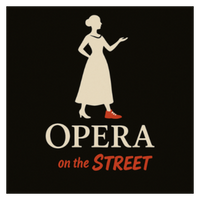Engaging Students with Opera: Tips & Tools
- Zongmiao (ZZ) Liu
- 5 days ago
- 3 min read
Opera often feels distant from students’ everyday lives. Its grand stages, complex stories, and classical music can seem intimidating or irrelevant. Yet, opera offers rich opportunities to connect students with history, culture, language, and emotion in ways few other art forms can. The challenge lies in making opera accessible, engaging, and meaningful for young learners.
This post explores practical strategies and tools educators can use to bring opera alive in the classroom. Whether you teach music, literature, drama, or history, these ideas will help you spark curiosity and deepen understanding through opera.
Why Opera Matters for Students
Opera combines music, theater, and storytelling. It offers a unique way to explore human emotions, social issues, and cultural traditions. Introducing students to opera can:
Build listening and critical thinking skills
Enhance language learning through lyrics and librettos
Connect historical events and literature with performance
Encourage creativity and empathy through dramatic expression
Despite these benefits, many students find opera hard to approach. The language barrier, long performances, and unfamiliar style can create distance. Educators need to bridge that gap with engaging methods and relevant content.
Choosing the Right Opera for Your Students
Selecting an opera that fits your students’ age, interests, and background is key. Here are some tips:
Pick operas with clear, relatable stories. For example, The Magic Flute by Mozart offers fantasy and humor that appeal to younger audiences.
Use operas based on familiar literature, like Carmen or Romeo and Juliet, to connect with students’ prior knowledge.
Consider shorter excerpts or scenes instead of full-length operas to keep attention focused.
Look for operas with translations or surtitles to help students follow the story.
Choosing the right piece sets the stage for engagement and learning.
Using Multimedia to Bring Opera to Life
Technology offers many ways to make opera accessible and exciting:
Video performances allow students to see costumes, sets, and acting alongside the music. The Metropolitan Opera’s free online streams provide excellent examples.
Audio recordings help students focus on the music and vocal techniques. Encourage active listening by asking students to note emotions or instruments.
Interactive apps and websites offer games, quizzes, and behind-the-scenes content. For example, the Opera America website has resources tailored for educators.
Virtual reality experiences can immerse students in opera houses or rehearsals, making the art form tangible.
Using multimedia caters to different learning styles and keeps students engaged.

Incorporating Opera into Different Subjects
Opera’s interdisciplinary nature makes it a great fit for various subjects:
Music classes can analyze vocal techniques, orchestration, and musical forms.
Language arts can explore librettos, poetry, and storytelling elements.
History lessons can examine the social and political context of operas, such as Nabucco and its role in Italian unification.
Drama classes can practice acting, stagecraft, and character analysis using opera scenes.
Cross-curricular projects deepen understanding and show opera’s relevance beyond music.
Hands-On Activities to Engage Students
Active participation helps students connect with opera on a personal level. Try these ideas:
Create a mini-opera: Students write their own short librettos and compose simple melodies or rhythms.
Costume and set design: Encourage students to design costumes or sets based on an opera’s themes.
Role-playing: Assign characters and have students act out scenes or improvise dialogue.
Listening journals: Students keep notes on their emotional and intellectual responses to opera excerpts.
These activities make opera tangible and fun.
Overcoming Common Challenges
Introducing opera can come with obstacles. Here’s how to address some common issues:
Language barriers: Use translations, summaries, and visual aids to clarify the story.
Length and complexity: Break performances into manageable segments and focus on highlights.
Student disinterest: Connect opera themes to students’ lives, such as love, conflict, or identity.
Limited resources: Use free online materials and collaborate with local opera companies or artists.
Persistence and creativity help make opera accessible to all students.
Partnering with Opera Professionals
Local opera companies, singers, and educators can enrich your program:
Invite guest artists for workshops or Q&A sessions.
Organize field trips to live performances or rehearsals.
Collaborate on student performances or community projects.
These partnerships provide authentic experiences and inspire students.
Measuring Engagement and Learning
Assessing how students respond to opera helps refine your approach:
Use quizzes or discussions to check comprehension of story and music.
Collect student reflections or creative projects as evidence of engagement.
Observe participation and enthusiasm during activities.
Feedback guides future lessons and highlights the impact of opera education.
Opera offers a powerful way to connect students with art, culture, and emotion. By choosing the right works, using multimedia tools, and involving students actively, educators can transform opera from a distant tradition into a vibrant learning experience. Start small, build curiosity, and watch students discover the joy and meaning of opera.
What opera will you introduce to your students next? Explore available resources, plan engaging activities, and bring this timeless art form into your classroom today.





Comments